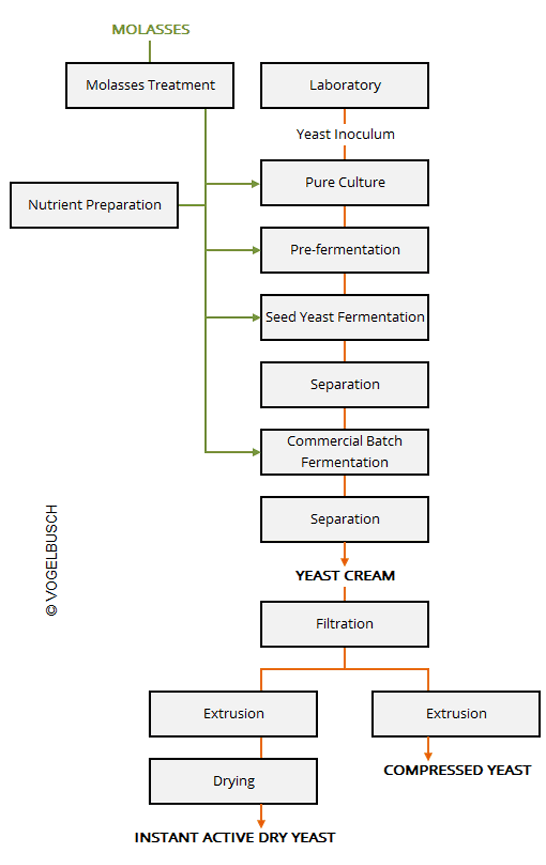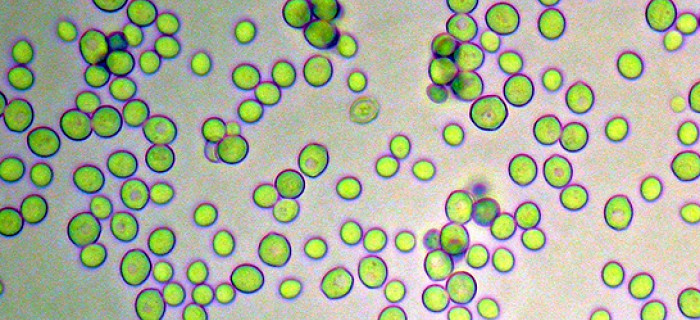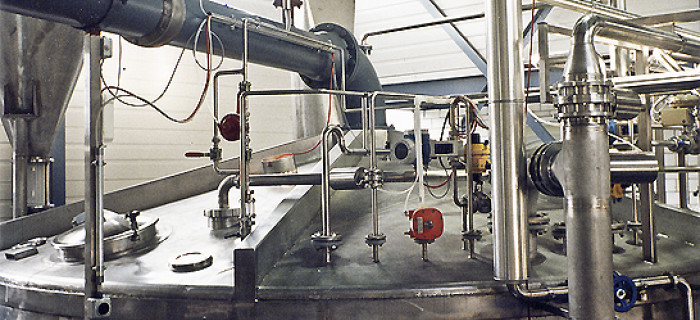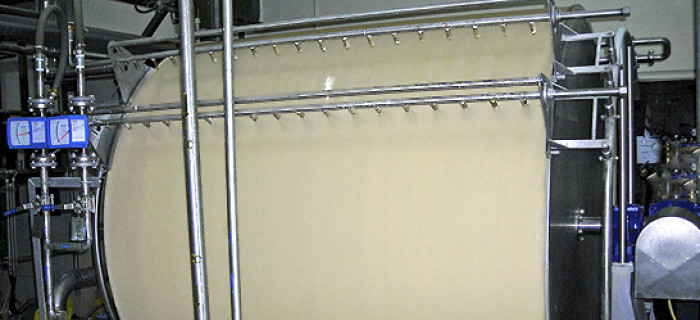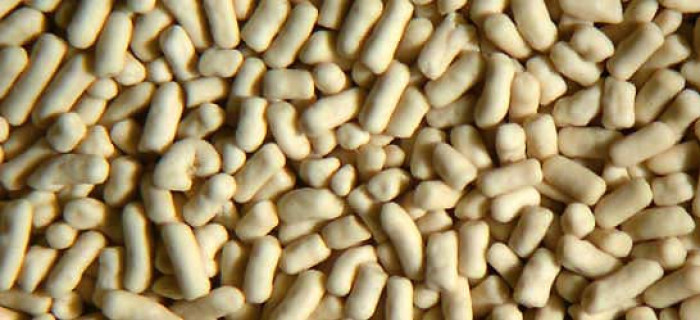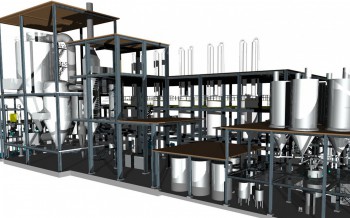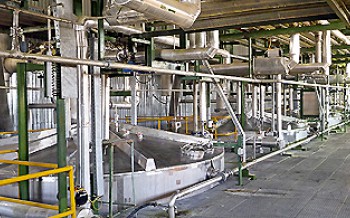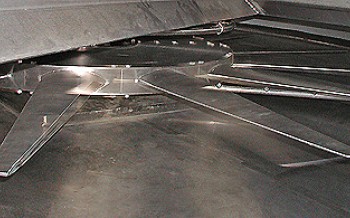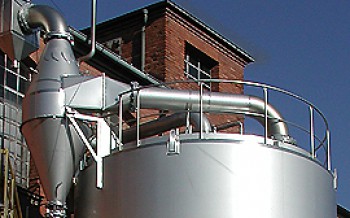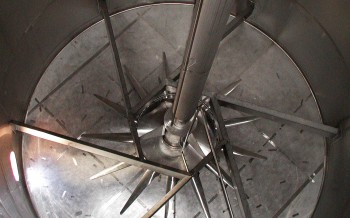Vogelbusch Baker's Yeast Technology
As a leavening agent, yeast converts sugar in the dough to carbon dioxide. The dough rises because of the bubbles of carbon dioxide becoming trapped during baking.
With our technology, baker’s yeast can be produced from a variety of raw materials containing sugar or starch. Mixtures of cane and beet molasses are the best choice for top product quality. Owing to circumstances, the sugars from molasses may be replaced by other sugar sources, such as hydrolysates from starch or even stale bread.

